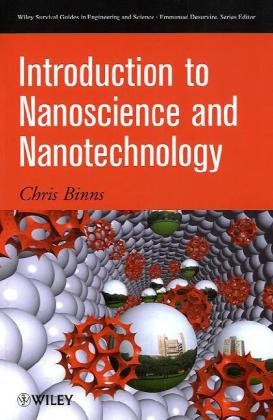

Most ebook files are in PDF format, so you can easily read them using various software such as Foxit Reader or directly on the Google Chrome browser.
Some ebook files are released by publishers in other formats such as .awz, .mobi, .epub, .fb2, etc. You may need to install specific software to read these formats on mobile/PC, such as Calibre.
Please read the tutorial at this link. https://ebooknice.com/page/post?id=faq
We offer FREE conversion to the popular formats you request; however, this may take some time. Therefore, right after payment, please email us, and we will try to provide the service as quickly as possible.
For some exceptional file formats or broken links (if any), please refrain from opening any disputes. Instead, email us first, and we will try to assist within a maximum of 6 hours.
EbookNice Team

Status:
Available4.8
16 reviews
ISBN 10: 0471776475
ISBN 13: 9780471776475
Author: Chris Binns
0.1 Incremental Nanotechnology.
0.2 Evolutionary Nanotechnology.
0.3 Radical Nanotechnology.
0.4 Bottom-Up/Top-Down Nanotechnology.
References.
1 Size Matters.
1.1 The Fundamental Importance of Size.
1.2 The Magnetic Behavior of Nanoparticles.
1.3 The Mechanical Properties of Nanostructured Materials.
1.4 The Chemical Properties of Nanoparticles.
1.5 Nanoparticles Interacting with Living Systems.
Problems.
References.
2 Nanoparticles Everywhere.
2.1 Nanoparticles in the Atmosphere.
2.2 Atmospheric Nanoparticles and Health.
2.3 Nanoparticles and Climate.
2.4 Marine Aerosol.
2.5 Nanoparticles in Space.
Problems.
References.
3 Carbon Nanostructures: Bucky Balls and Nanotubes.
3.1 Why Carbon?
3.2 Discovery of the First Fullerene - C60.
3.3 Structural Symmetry of the Closed Fullerenes.
3.4 Smaller Fullerenes and "Shrink-Wrapping" Atoms.
3.5 Larger Fullerenes.
3.6 Electronic Properties of Individual Fullerenes.
3.7 Materials Produced by Assembling Fullerenes (Fullerites and Fullerides).
3.8 Discovery of Carbon Nanotubes.
3.9 Structure of SWNTs.
3.10 Electronic Properties of SWNTs.
3.11 Electronic Transport in Carbon Nanotubes.
3.12 Mechanical Properties of Nanotubes.
3.13 Thermal Conductivity of Nanotubes.
3.14 Carbon Nanohorns.
3.15 Carbon Nanobuds and Pea Pods.
Problems.
References.
4 The Nanotechnology Toolkit.
4.1 Making Nanostructures Using Bottom-up Methods.
4.2 Making Nanostructures Using Top-Down Methods.
4.3 Combining Bottom-up and Top-Down Nanostructures.
4.4 Imaging, Probing and Manipulating Nanostructures.
Problems.
References.
5 Single-Nanoparticles Devices.
5.1 Data Storage on Magnetic Nanoparticles.
5.2 Quantum Dots.
5.3 Nanoparticles as Transistors.
5.4 Carbon Nanoelectronics.
Problems.
References.
6 Magic Beacons and Magic Bullets: The Medical Applications of Functional Nanoparticles.
6.1 Nanoparticles Interacting with Living Organisms.
6.2 Treatment of Tumours by Hyperthermia.
6.3 Medical Diagnosis and "Theranostics" Using Nanomaterials.
Problems.
References.
7 Radical Nanotechnology.
7.1 Locomotion for Nanobots and Nanofactories.
7.2 On-Board Processing for Nanomachines.
7.3 Medical Nanobots.
7.4 Molecular Assembly.
References.
8 Prodding the Cosmic Fabric.
8.1 Zero-Point Energy of Space.
8.2 The Casimir Force.
8.3 The Casimir Force in Nanomachines.
References.
Glossary.
Index.
introduction to nanoscience and nanotechnology
introduction to nanoscience book
intro to nanotechnology
introduction to nanoscience pdf
an introduction to nanoscience and nanotechnology
introduction to nanotechnology book
introduction to nanoscience and nanotechnology a workbook
Tags: Chris Binns, Nanoscience, Nanotechnology